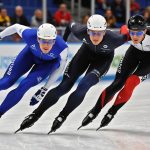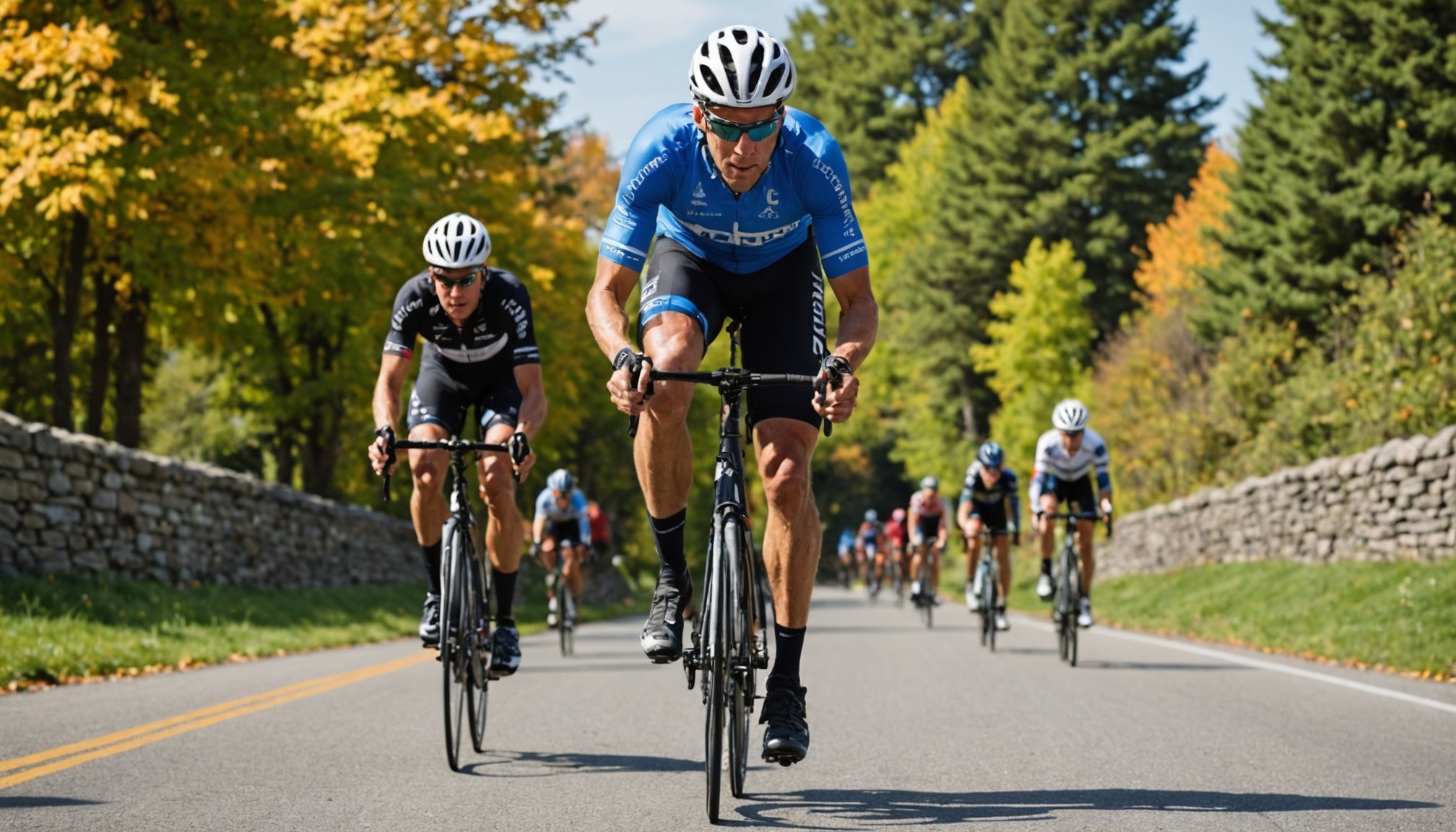Understanding Off-Season Training for Cyclists
Recognising the importance of off-season training for competitive performance can make a significant difference in a cyclist’s career. The off-season is a crucial time to focus on various elements that are often overlooked during the hustle of in-season competition. Such training is integral to recovery, preventing burnout, and enhancing future performance.
During this period, the key goals include improving strength, addressing weaknesses, and setting a foundation for the upcoming season. Cyclists often engage in different training activities, focusing not just on riding but also on building core strength and flexibility. Activities such as resistance training and cross-training can be beneficial.
This might interest you : Optimal Strategies for Analyzing Aerodynamic Drag in Elite Speed Skating Competitions
Off-season cycling strategies differ from typical in-season training. While in-season training is intense and performance-focused, the off-season allows for a more relaxed approach that includes varied methods like training periodization. This ensures that both physical and mental elements are well-prepared for the demanding season ahead, offering a well-rounded approach to cycling. Through catering to these diverse needs, cyclists are empowered to improve not merely on a competitive level but in overall physical robustness.
Strength Training Strategies for Cyclists
For cyclists seeking performance enhancement, strength training offers substantial benefits. It not only boosts cycling performance but also contributes to overall endurance and injury prevention. Let’s delve into the specific strategies.
In parallel : Optimizing Recovery Strategies: Essential Post-Competition Protocols for Ultra-Endurance Athletes
Benefits of Strength Training
Strength training for cyclists primarily enhances muscle efficiency. By incorporating resistance training, cyclists can increase pedal power, improve endurance, and achieve a more stable riding position. This is crucial for tackling demanding terrains and maintaining speed over long distances.
Core Development Exercises
Core strength is pivotal for maintaining balance and transferring power effectively to the pedals. Exercises such as planks, Russian twists, and leg raises are essential. These exercises fortify the midsection, which in turn stabilises the spine and enhances overall cycling efficiency.
Upper and Lower Body Focus
A well-rounded strength training routine should balance upper and lower body workouts. Upper body exercises like push-ups and rows improve muscle endurance for longer rides. Meanwhile, squats and lunges focus on lower body strength, promoting effective pedal strokes. Incorporating functional movements, such as deadlifts and box jumps, aligns workout routines with cycling-specific dynamics, ultimately bolstering performance.
Nutrition: Fueling Your Off-Season Success
Exploring cycling nutrition during the off-season is crucial for maintaining and enhancing your performance. This period allows athletes to focus on balancing their off-season diet to support optimal recovery and improvement.
Macronutrient Breakdown
In cycling’s performance nutrition, understanding macronutrients—carbohydrates, proteins, and fats—is essential. Carbohydrates should constitute about 50-60% of your total calorie intake. They provide the primary fuel source for intense training sessions. Proteins, making up 15-20% of intake, are vital for muscle repair. Including healthy fats, about 20-35%, supports energy reserves and hormone regulation.
Importance of Hydration
Hydration remains fundamental, even in the off-season, for sustaining performance levels. Hydration supports cellular function and joint lubrication. Implementing strategies like regular water intake and monitoring urine colour can help maintain optimal hydration levels and prevent dehydration.
Supplements and Performance
Though natural food sources are ideal, supplements can complement your diet. Cycling enthusiasts often consider BCAAs for recovery, Omega-3 for heart health, and Vitamin D for bone strength and immune function. However, consulting with a nutritionist before starting any supplements is advisable to ensure they align with your personal health needs and cycling goals.
Prioritizing Recovery During the Off-Season
Recovery strategies for athletes are essential to enhancing performance and longevity in sports.
Active Recovery Techniques
Active recovery, such as low-intensity exercises, helps maintain fitness while promoting healing. Engaging in activities like swimming, yoga, or cycling can increase blood flow to muscles, aiding in the removal of metabolic waste. Incorporating active recovery into your routine reduces muscle soreness and accelerates recovery, allowing athletes to return stronger and faster for their next competition.
Importance of Sleep and Stress Management
Quality sleep is crucial for effective recovery. It aids in muscle repair, memory consolidation, and hormone regulation. Stress management techniques, including meditation and breathing exercises, can enhance sleep quality, fostering a more complete recovery. Inadequate sleep and unmanaged stress may increase injury risk and delay recovery. Therefore, prioritizing these aspects during the off-season is beneficial for athlete wellbeing.
Injury Prevention Strategies
Adopting proper techniques is essential for injury prevention. Incorporating strength training, flexibility exercises, and routine check-ups are practical strategies to minimise injury risks. For cyclists, focusing on proper bike fitting and balance exercises can prevent common cycling injuries. By investing time in preventive measures, athletes can ensure their readiness and peak performance throughout the competitive season.
Mental Preparation and Goal Setting
Understanding mental toughness in cycling is essential for athletes aiming to boost their performance. A strong mindset can often be the deciding factor between success and stagnation. Strategies such as cultivating a competitive mindset, setting precise goals, and using visualization can significantly enhance an athlete’s performance.
Developing a Competitive Mindset
Building a mindset for performance involves embracing challenges and persisting through adversity. Athletes must learn to handle pressure and remain focused on their goals. Techniques such as positive self-talk and maintaining a growth mindset are crucial for overcoming setbacks and sustaining motivation during demanding training sessions.
Setting SMART Goals
When it comes to goal setting for athletes, SMART goals — Specific, Measurable, Achievable, Relevant, and Time-bound — provide a structured path. These goals help clarify objectives, making it easier to track progress and stay motivated. Ensuring goals are challenging yet realistic enhances an athlete’s commitment and focus.
Visualization Techniques
Visualization is a powerful tool for athletes looking to enhance their performance. Imagining successful outcomes and rehearsing scenarios mentally can boost confidence and preparedness. By regularly practising visualization, athletes can condition their minds to expect success, thus improving their potential for achieving desired results.
Real Life Case Studies: Success Stories from Elite Cyclists
In the realm of elite cycling, athlete case studies often highlight exceptional cycling success stories drawn from intensive off-season regimens. Consider Victoria Pendleton, a celebrated track cyclist who meticulously planned her off-season to maximise her sprinting prowess. Her regime, featuring a blend of strength training and recovery techniques, exemplifies the importance of structured preparation.
Another prominent example comes from Chris Hoy, whose success story emphasizes the strategic balance between endurance rides and high-intensity interval training. His case study articulates how periodising workouts can effectively enhance performance outcomes during competitive seasons.
These training insights underscore critical strategies such as nutritional optimization and mental resilience-building. Elite cyclists often advocate for incorporating cross-discipline exercises, such as swimming or yoga, to maintain agility and prevent overuse injuries.
Lessons learned from such athlete case studies accentuate the value of adaptability and consistency. Flexibility in training approaches allows cyclists to address individual strengths and weaknesses. Moreover, adopting a holistic view towards fitness, addressing both mental and physical facets, often catalyses remarkable improvements.
Through the examination of real-life examples, cyclists can glean profound insights to replicate and innovate upon, forging their path to success during off-season cycles.
Actionable Tips for Implementing Off-Season Training
Creating an off-season training plan tailored to your unique needs is essential for optimizing your cycling performance. Customizing your schedule ensures you address your specific weaknesses and maximize your potential.
Creating a Customized Training Schedule
When starting, evaluate your past performance and identify areas for improvement. Then, plan a balanced routine incorporating various cycling training tips, like endurance rides, strength training, and flexibility exercises. These components enhance different aspects of fitness, laying a robust foundation for the upcoming season.
Tracking Progress Effectively
To track your progress, use digital tools like fitness apps or smartwatches, which offer valuable insights into your performance metrics. Regularly monitor elements such as speed, heart rate, and recovery time. Keeping a log helps to identify trends, allowing necessary adjustments to your training plan for maximizing potential.
Staying Motivated Throughout the Off-Season
Motivation can dwindle during the off-season, but setting achievable goals and celebrating milestones can help maintain focus. Mix up training with enjoyable activities like group rides or trying new routes. Additionally, sharing goals with a community or friends provides accountability, keeping your training efforts consistent and rewarding.













